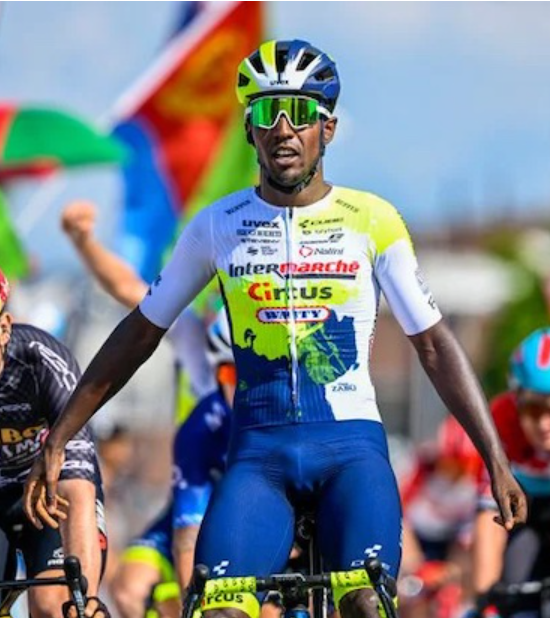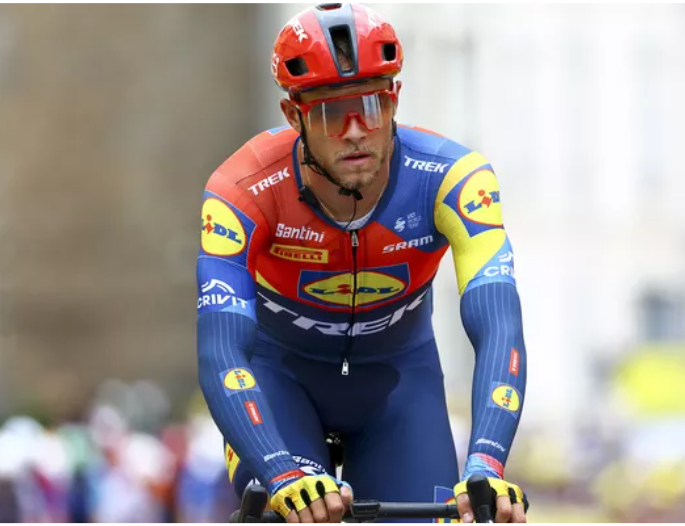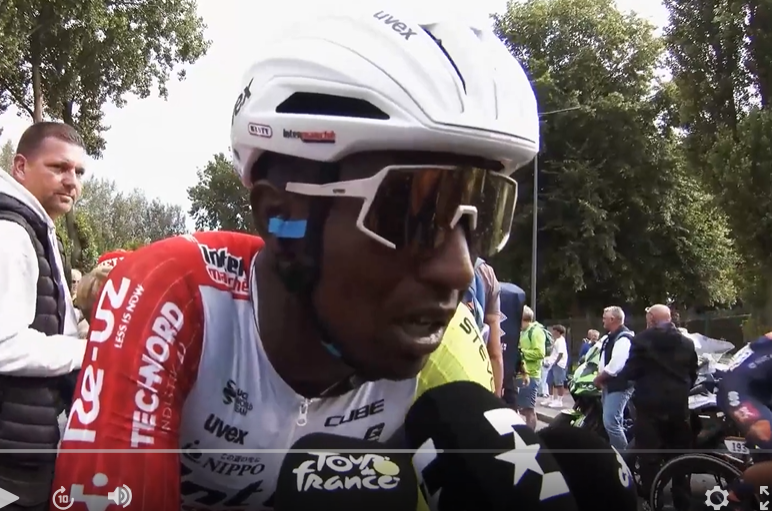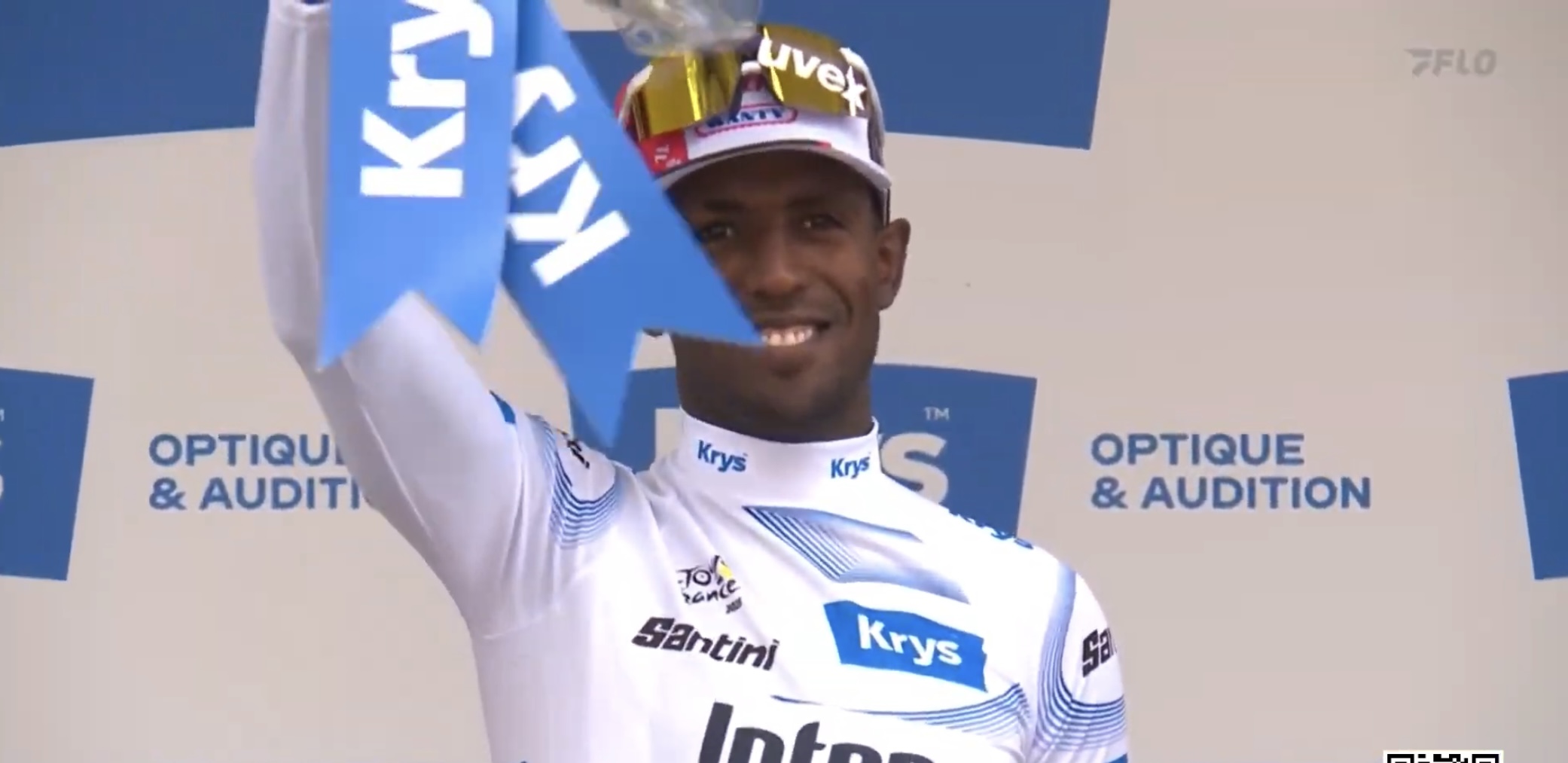As the peloton prepares to thunder into Laval for Stage 8 of the 2025 Tour de France, cycling fans around the world are bracing for a dramatic sprint finish. The stage is flat, fast, and tailor-made for sprinters — and all eyes are on a tight green jersey duel between Jonathan Milan of Italy and Biniam Girmay of Eritrea.
To most, it's a simple battle of two talented riders.
To those who understand the history — it's a story 85 years in the making.
🏆 Girmay: The First of His Kind
By the age of 24, Biniam Girmay had already redefined what was possible for Black African cyclists:
But this story didn't start with him.
📜 A Ride Through Time: Eritrea and Italy's Shared Cycling Legacy
Cycling was introduced to Eritrea during Italian colonial rule, when paved roads and road racing were brought to Asmara by the Italians in the 1930s. The races were segregated — Italians raced among themselves; Eritreans also raced among themselves.
That changed in 1939, under Governor Felice de'Odiche, who had deep ties to the Eritrean people and approved the first mixed race between Italian and Eritrean riders.
In that historic race, Ghebremariam Ghebru, a young Eritrean, crossed the finish line first — the first recorded victory by an Eritrean over his colonial counterparts. It was a quiet act of rebellion, a moment of pride, and the start of something enduring.
Cycling became part of the national fabric — even during war, occupation, and struggle. Eritrean cyclists continued to race, to train, and to dream.
🏔️ From Asmara to France: The Rise of a Nation on Two Wheels
Today, Eritrea stands as Africa's undisputed cycling powerhouse:
- A perennial winner at African Continental Championships
- One of the first African nations to send cyclists to the Olympic Games
- The home of a cycling culture as passionate and deep-rooted as any in Europe
In 2015, Daniel Teklehaimanot made history as the first Black African to wear the King of the Mountains jersey — the iconic polka dot.
Ten years later, in 2024, Girmay followed — capturing the green jersey, not through luck, but through grit, sprints, and sheer will.
This year, Girmay began his Tour in white — and he's hungry to finish in green again.
🟩 Milan vs. Girmay: Two Sprinters, One Crown
Jonathan Milan is a powerhouse — with multiple medals and consistent points jersey wins. His sprinting style is forceful and head-down — a hammer striking the pedals.
Biniam Girmay rides with elegance — fast, fluid, calculated — like a cheetah on wheels, sharpened by years of riding through the hills of Asmara, one of the highest capitals in the world at over 2,300 meters above sea level.
That altitude has gifted Girmay — and Eritrean cyclists — with something few commentators mention: natural oxygen adaptation, stamina, and energy efficiency built from youth.
When he goes all in, he doesn't fade — he flies.
So far in this Tour, he hasn't unleashed his full sprint. But those who know him know: he's waiting. He's calculating. And when he launches, it won't be just for a stage.
💭 The Weight He Carries
When Girmay sprints, he doesn't just race for himself. He carries:
He is calm on the outside — always smiling, respectful, humble.
But when the moment comes, he becomes ruthless, focused, and fearless — a sprinter who makes no noise until it's too late.
⚡ Laval: A New Chapter Begins
Let the analysts talk about Merlier or Milan.
Let them underestimate the boy from Asmara.
But make no mistake: if Biniam Girmay finds the space, he will write another line in the history books — for Eritrea, for Africa, and for every kid who's ever chased a dream on two wheels.



